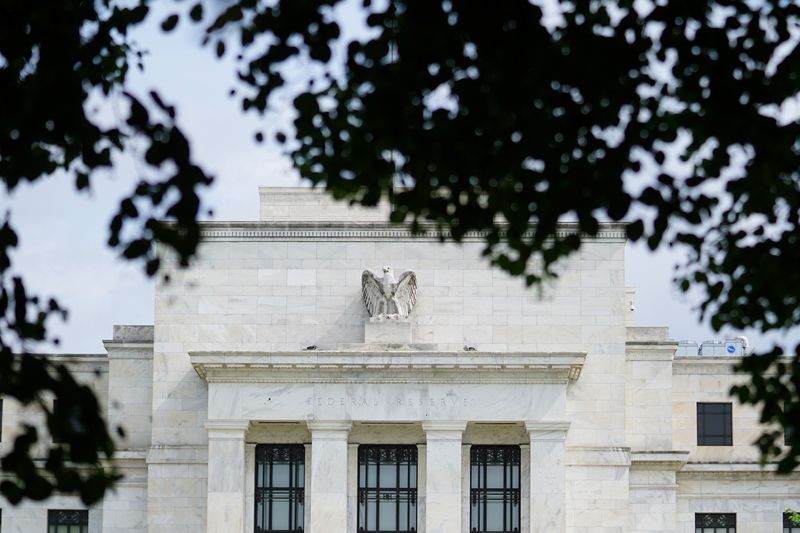WASHINGTON (Reuters) - U.S. central bankers think they’ll need to lower interest rates to a range of 4.25%-4.50% by year-end, more than they anticipated in June, as inflation approaches their 2% goal and unemployment rises.
That's according to the median of new economic projections published on Wednesday by the Federal Reserve at the end of its Sept. 17-18 meeting, at which it delivered part of that expected 100 basis-point reduction this year in the form of an initial half-of-a-percentage-point cut.
The Fed's target range for its short-term borrowing benchmark is now 4.75%-5.00%, and the projections imply policymakers expect quarter-point rate cuts at each of the last two meetings this year, in November and December.
By the end of 2025, policymakers anticipate a policy rate of 3.4%, according to the median of their projections, implying an additional four quarter-of-a-percentage-point cuts next year. The policy rate was seen at 2.9% at the end of both 2026 and 2027, reflecting an arrival to what the median Fed policymaker now sees as a neutral rate.
In June, the last time the Fed released quarterly projections, the median U.S. central banker anticipated just one quarter-point reduction in all of 2024. Since then, inflation eased from what had been unexpectedly strong readings early in the year.
At the same time, the unemployment rate, now 4.2%, is more than half a percentage point higher than it was when the Fed began its year-and-a-half-long rate-hike campaign in March of 2022. The Fed on Wednesday said it decided to cut rates in light of progress toward its inflation goal and with the risks to both its mandates now "roughly in balance."
The decision drew a dissent from Fed Governor Michelle Bowman, who wanted just a quarter-point cut.

The projections, which represent individual policymakers' views rather than an agreed consensus, show two of the Fed's 19 policymakers felt the Fed should not cut rates any further this year, and seven thought only one rate cut of a quarter-of-a-percentage point would be necessary.
On the other end of the spectrum, just one policymaker anticipates more rate cuts this year than the median view.